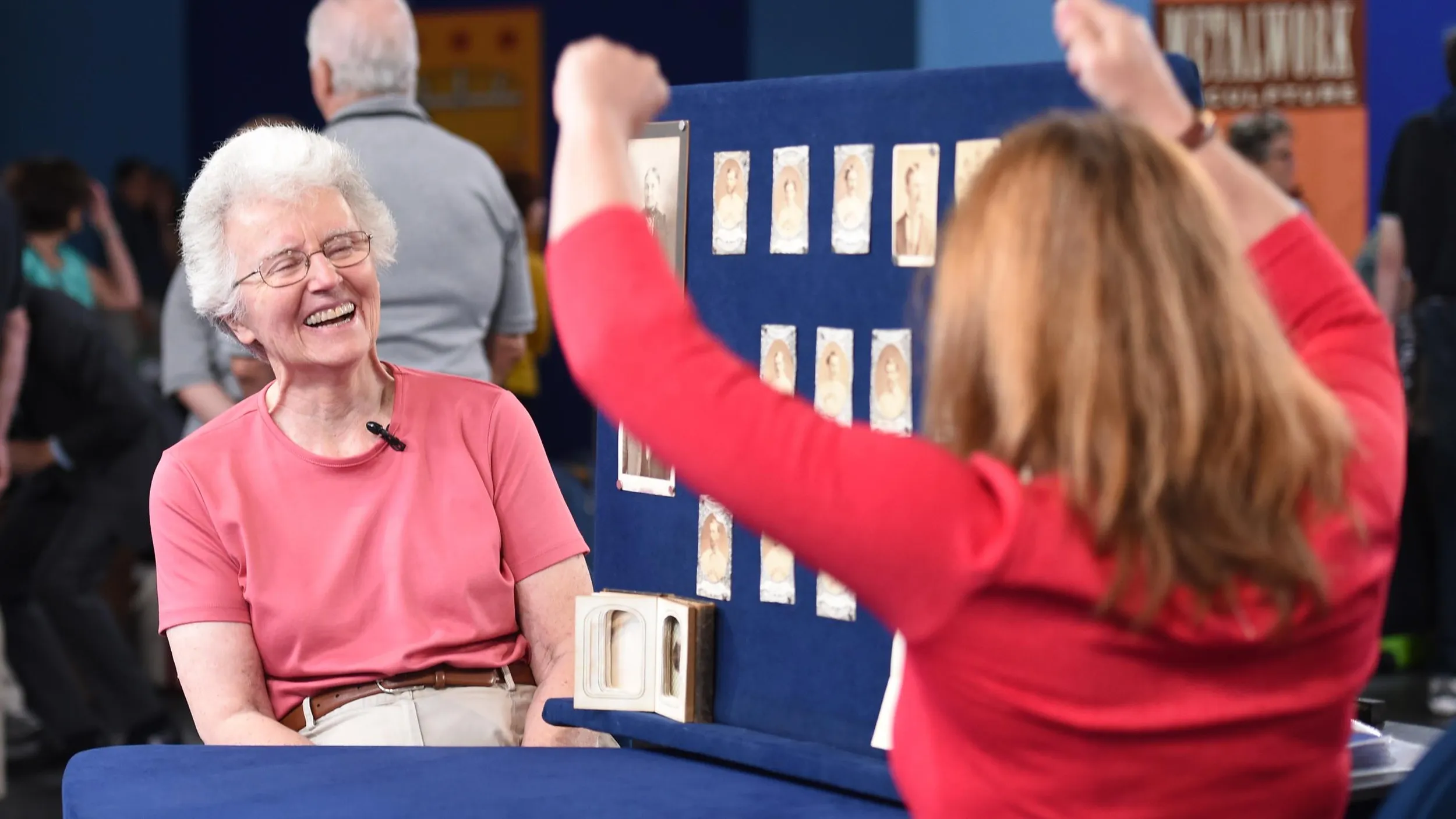GUEST: This is a chess set that I've had for a number of years. I think it was Sixth Avenue, Paul Lobel had a shop. This was in the window. I could never afford anything in his shop, not even the earrings. And at some point, my husband bought me the chess set.
APPRAISER: Well, you've mentioned who it's by, and it is by Paul Lobel.
GUEST: Yes.
APPRAISER: The famous American modernist designer. His first big hit was really in 1934 when he was selected to participate in an exhibit at the Metropolitan Museum of Art on contemporary American industrial design. And in that exhibit, he had a prototype of a tea set. So that's really his first claim to fame.
GUEST: Right.
APPRAISER: But during the war, he switched to using silver and designing more jewelry and smaller sculptures and figures. It was at this time in 1944 that he opened his store in Greenwich Village.
GUEST: Oh, okay.
APPRAISER: And what's interesting about that is that the same year, in 1944, there was an exhibition at a gallery here in New York called the Julien Levy Gallery called "The Imagery of Chess." Several very important Surrealist artists exhibited chess sets, chess pieces, chess tables, or images relating to chess.
GUEST: Wow.
APPRAISER: And some of those artists include Calder…
GUEST: Oh, of course.
APPRAISER: Gorky, Duchamp, Ernst.
GUEST: Wonderful.
APPRAISER: It's a who's who of all the important Surrealists at that time. Incredible. Lobel was not participating in it as an artist, but I think he looked at that and did his own chess set. So we have here on the top the chess pieces made out of sterling silver...
GUEST: Right.
APPRAISER: copper...
GUEST: Right.
APPRAISER: And then they're placed on this piece of glass, which rests above a teak and brass checkerboard pattern. And I think what's the most interesting is that he's used this negative space where there isn't any teak or brass as the darker squares on the chess board.
GUEST: That's right.
APPRAISER: And if we take a piece off here, we're going to see that he marked it on the underside with his name and "sterling," since it is sterling silver.
GUEST: Right.
APPRAISER: So he's done these great interpretations of all the pieces on a chessboard. It's not what we normally expect.
GUEST: No.
APPRAISER: Do you remember at the time it was purchased for you what your husband paid for it?
GUEST: Yes. I thought it was exorbitant because he spent $1,000, which in those days was an awful lot of money, but he knew I loved it, and he bought it.
APPRAISER: And that was in 1954?
GUEST: '54.
APPRAISER: I think today, a very reasonable auction estimate-- and I think this is conservative-- would be $25,000 to $35,000.
GUEST: That would be very nice. That would be lovely. They're like little mini sculptures.











